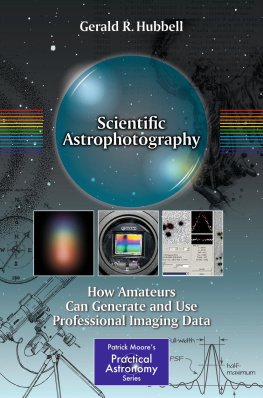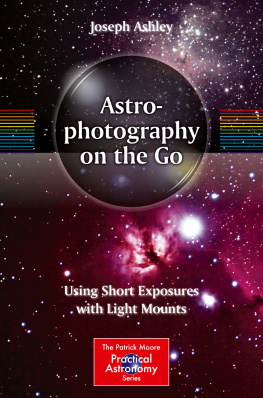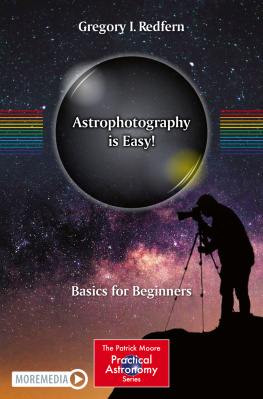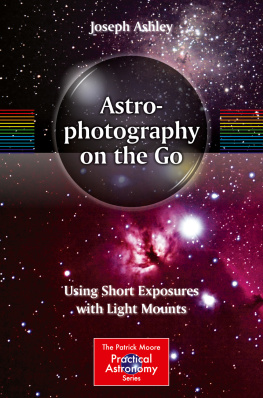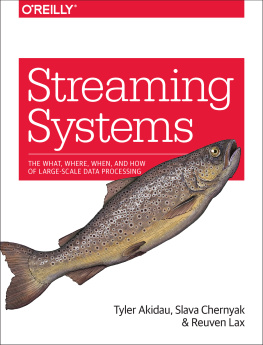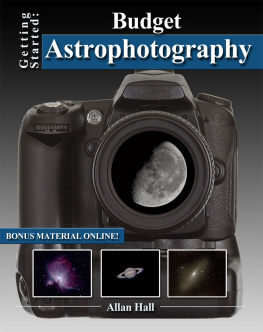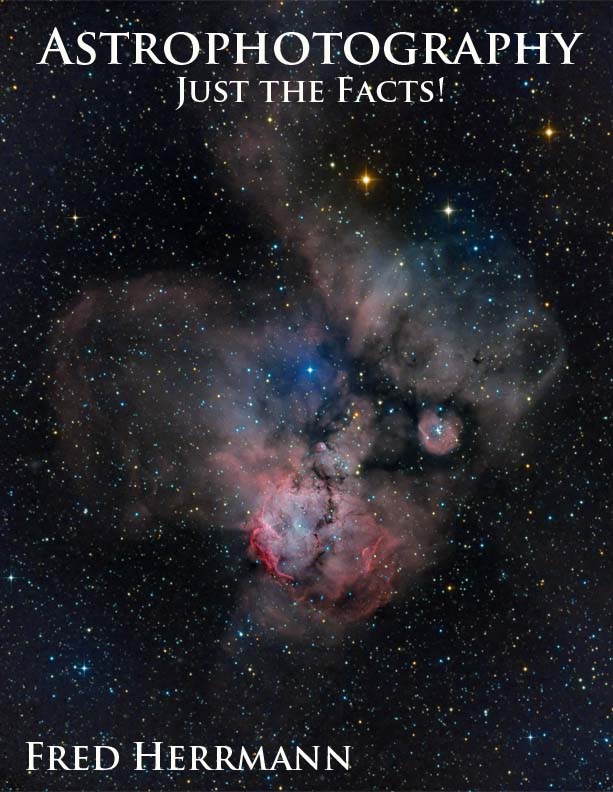
Table of Contents
Preface
About the Author
Dedication
Starting from the GroundUp
Binning A Simple Way toIncrease Sensitivity
Filters An Effective Solution toLight Pollution
Summary
Processing withPixInsight
PixInsight A Look at theLayout
Calibrating Data
Creating Master Dark andBias Frames
CosmeticCorrection
CalibrationFlats
Using the PixInsight BatchPreprocessing Script
The Star AlignmentProcess
The Image IntegrationProcess
The Dynamic CropProcess
The Channel CombinationProcess
Color CalibrationProcesses
Automatic BackgroundExtraction Process
The DeconvolutionProcess
The Histogram TransformationProcess
PhotoshopIntroduction
HistogramAdjustment
Selective ContrastEnhancements using Photoshop Masking
Combining Color andLuminescence within Photoshop
The PixInsight ATrousWavelet Transform
Conclusion
Astrophotography, Just theFacts!
BY
FRED HERRMANN
All Content Copyright 2016 by Owl Mountain Publishing Inc.
All rights reserved. Thisbook or any portion thereof may not be reproduced or used in anymanner whatsoever without the express written permission of thepublisher except for the use of brief quotations in a review ofthis text.
Although the author andpublisher have made every effort to ensure that the information inthis book was correct at press time, the authors and publisher donot assume and hereby disclaim any liability to any party for anyloss, damage, or disruption caused by errors or omissions, whethersuch errors or omissions result from negligence, accident, or anyother cause.
Published by Owl MountainPublishing
PREFACE
The purpose of this book isto outline a practical and concise approach to the collection andprocessing of astrophotography imagery. I will use PixInsight andPhotoshop for the processing of the data. I will take a step bystep approach using the same methods I use for all of myastrophotography imagery. This same basic approach will workregardless if youre using a $1000 portable setup from your frontyard or a $30,000 observatory for your data collection.
While each set of imagerydata has its own unique set of challenges, the processing approachremains the same. I will use a set of imagery data that I havecollected from my Owl Mountain Observatory as the basis for thisprocessing tutorial.
After you complete thistutorial you should have a sound understanding of PixInsight onwhich to base an exploration of the many other features thatPixInsight offers.
Please join me and followalong as we reveal and explore our amazing Universe.
Fred Herrmann
Alabama, USA
May 2016
ABOUT THEAUTHOR
I was born in the" Atomic City " (OakRidge, Tennessee) and then lived my formative years in the" Rocket City "(Huntsville, Alabama). I believe I was destined for a career in thesciences. I received my early education in the United States andEurope and later returned to Huntsville to complete my education atthe University of Alabama Huntsville.
I retired after thirty yearsof service at the NASA George C. MarshallSpace Flight Center , as ascientist/engineer and am the proud father of three lovelydaughters and six grandchildren. During my career at NASA, I hadthe privilege of working on a variety of NASA programs includingthe Spacelab and International SpaceStation . I also worked on the Spacelab Astro Observatory mission which was the first space telescope and precursorto the Hubble Space Telescope.
I have published a varietyof scientific papers and hold a patent for a "Hanging Drop" ProteinCrystal Growth apparatus now currently flying on the International Space Station . Many of my memorable NASA experiences were at the NeutralBuoyancy Simulator where I trained Shuttle astronauts for variousmissions including the Hubble repair mission, Ease/Access and theShuttle Manned Maneuvering Unit (MMU) mission. During thistraining, I had the honor of working with many of the Shuttleastronauts including Story Musgrave, BruceMcCandless, George "Pinky" Nelson, James "Ox" van Hoften and RonaldMcNair just months before he met hispremature death in the Challenger disaster in 1986.
When I am not travelingwith my lovely wife Melody or romping with the grandchildren, Ilove to explore the Universe from my Owl Mountain Observatory. Ihave enjoyed doing astrophography since the early 1990s. My imageshave been published by outlets including National Geographic,Astronomy and Sky and Telescope magazines. Astrophotography is anever changing hobby with limitless challenges andopportunities.
Fred Herrmann
I dedicate this book to mywife Melody, my dedicated proof reader Amber, and also to mygrandchildren Emma, Lukas, Anna, Katherine, Sophie andAlexis.
FRED HERRMANN
Starting from the GroundUp
This text will for the mostpart concentrate on processing techniques. I will now howeverprovide a short lessons learned series of tips which will helpyou avoid some of the pitfalls of a beginningastrophotographer.
The foundation, whetheryoure building a house or starting out in the hobby ofastrophotography, is your first and most important step. Thefoundation of astrophotography literally starts with the telescopemount and the ground upon which it sits. If your going to build apermanent observatory try to choose a site which is shielded fromneighbors and street lights.
While you can overcomelight pollution with filters and processing techniques its alwaysmuch easier to work with clean data devoid of light pollutiongradients. Also try to locate your telescope so that you have agood view of the southern horizon. Dont worry about being able tosee the horizon since you will rarely image below an altitude of 20degrees. Trying to image below 20 degrees usually results in noisyand low resolution images since the lower you point your telescopethe more atmosphere you have to look through. The sweet spot forany given celestial object is when the object reaches its peakaltitude. Pointing straight up gives you the least amount ofdistorting atmosphere to look through.
Please note that this textwill not cover the astronomy basics of where, when and how to findcelestial objects to image or the advantages of certain optics. Ifyou dont already know the basics of astronomy let me recommend mybook, Astronomy forEveryone . Astronomy for Everyone is anentry level book designed to instruct the basics of astronomywithout overwhelming the reader with a myriad of scientific jargon .Astronomy for Everyone covers the basics of astronomy from A to Z.It will help you decide which telescope to purchase, show you whatyou can expect to see, teach you how to find celestial objects inthe night sky and give you a tour of the types of objects availablefor viewing and imaging. Astronomy for Everyone is available at most eBook onlineoutlets.
Another important factor whenpurchasing a telescope mount is to pick one which will easily carrythe weight of your telescope and camera. Using a flimsy mount on ashaky tripod will result in poor images. Your entire system needsto be able to track the object youre imaging without any influencefrom a breeze or people walking around it. Never place yourtelescope on anything other than the ground. Imaging from a woodendeck will turn your telescope into an excellent seismometer whichwill show every tiny step that you or anyone else take in and aboutyour telescope. If you are setting up an observatory the telescopepier supporting the mount must be isolated from the rest of yourobservatory since any movement within the observatory will betransferred directly to the telescope.
Next page

